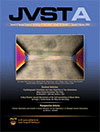
JOURNAL OF VACUUM SCIENCE & TECHNOLOGY A
Scope & Guideline
Elevating the Standards of Applied Physics Research.
Introduction
Aims and Scopes
- Thin Film Deposition Techniques:
Research focused on various methods of thin film deposition, including atomic layer deposition (ALD), chemical vapor deposition (CVD), and magnetron sputtering, emphasizing innovations in process stability, film quality, and application-specific outcomes. - Surface and Interface Science:
Studies investigating the properties and behaviors of surfaces and interfaces, including surface modification, material interactions, and the effects of processing conditions on surface characteristics. - Plasma Processing and Characterization:
Research exploring the role of plasma in material processing, including plasma-enhanced deposition techniques, etching processes, and the characterization of plasma properties to improve material performance. - Materials Characterization Techniques:
Development and application of advanced characterization techniques such as x-ray photoelectron spectroscopy (XPS), scanning tunneling microscopy (STM), and ellipsometry to analyze thin films and nanostructures. - Functional and Smart Materials:
Exploration of new materials with specific functionalities, including smart coatings, photonic materials, and nanocomposites, aimed at enhancing performance in electronic, optical, and biomedical applications.
Trending and Emerging
- Atomic Layer Deposition Innovations:
Research on atomic layer deposition (ALD) continues to gain prominence, particularly in optimizing processes for new materials, enhancing selectivity, and developing novel precursors for improved film qualities. - Integration of Machine Learning in Material Science:
An increasing trend towards using machine learning and artificial intelligence to predict material properties, optimize deposition processes, and analyze complex datasets in materials research. - Sustainable and Green Technologies:
Growing interest in sustainable practices, including the development of environmentally friendly deposition processes and materials that minimize waste and energy consumption. - Advanced Characterization Techniques:
Emerging methods in materials characterization, such as in situ analysis and advanced spectroscopy techniques, are becoming more common as researchers seek to gain deeper insights into material behavior during processing. - High-Performance Materials for Electronics:
There is a rising focus on developing high-performance materials for electronic applications, including wide-bandgap semiconductors like β-Ga2O3, which are critical for next-generation electronic devices.
Declining or Waning
- Traditional Vacuum Technologies:
Research related to conventional vacuum technologies has decreased, possibly due to a shift towards advanced materials and novel processing techniques that leverage modern capabilities. - Older Surface Analysis Techniques:
The use of older surface analysis techniques may be declining as researchers increasingly adopt more advanced methods that provide greater resolution and analysis capabilities, such as high-energy resolution spectroscopies. - Basic Studies on Classical Thin Film Materials:
There is a noticeable decline in basic research on classical thin film materials, such as simple metal or oxide films, as interest shifts towards complex, multi-component materials with tailored properties.
Similar Journals

APPLIED PHYSICS A-MATERIALS SCIENCE & PROCESSING
Illuminating the Path of Contemporary Materials ResearchApplied Physics A: Materials Science & Processing, published by Springer Heidelberg, is an esteemed academic journal that has been at the forefront of innovative research since its establishment in 1995. With a strong focus on the intersection of physics, materials science, and engineering, this journal explores cutting-edge developments and applications that influence contemporary materials research. Categorized in the Q2 quartile across both Chemistry and Materials Science, it boasts respectable rankings in Scopus, affirming its influence and reach within the academic community. Although primarily a subscription-based journal, it is dedicated to disseminating high-quality research findings that advance our understanding in these fields. Researchers, professionals, and students alike can benefit from the journal's commitment to publishing comprehensive studies, methodological advancements, and insightful reviews that push the boundaries of knowledge in materials science.
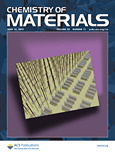
CHEMISTRY OF MATERIALS
Catalyzing Progress in Advanced Material ResearchChemistry of Materials, published by the American Chemical Society, stands at the forefront of innovative research in the disciplines of chemical engineering, materials science, and chemistry. With an impressive impact factor, this esteemed journal is recognized globally, having achieved Q1 rankings in three significant categories for 2023: Chemical Engineering, Materials Chemistry, and General Chemistry. This positions the journal in the top tier of academic publications, reflecting its influence and rigor in advancing the field. Since its inception in 1989, Chemistry of Materials has been a platform for groundbreaking studies, contributing essential insights and discoveries that shape modern materials science. While currently not an open-access journal, it remains an invaluable resource for researchers, professionals, and students seeking to explore cutting-edge materials research and applications. Its well-curated collection of articles underscores the journal's commitment to enhancing understanding and promoting innovations in material chemistry and its associated fields.

Advanced Materials Interfaces
Elevating Materials Science through Open Access InsightsAdvanced Materials Interfaces is a premier journal dedicated to the exploration and advancement of materials science, with particular emphasis on the interfacial phenomena that govern the behavior of materials in various engineering applications. Published by WILEY in the United Kingdom, this Open Access journal, established in 2014, has quickly ascended to a Q1 category ranking in both Mechanical Engineering and Mechanics of Materials as of 2023, reflecting its significant influence and excellence in the field. With impressive Scopus Ranks, such as #81 out of 672 in Mechanical Engineering and #58 out of 398 in Mechanics of Materials, it serves as a vital resource for researchers and practitioners aiming to push the boundaries of materials innovation. The journal provides unrestricted access to its cutting-edge research, promoting collaboration and dissemination of knowledge among the global scientific community, solidifying its role as a vital contributor to the ever-evolving landscape of materials engineering.

MRS Advances
Empowering Research Through Rigorous Peer ReviewMRS Advances, published by Springer Heidelberg, is an esteemed academic journal that serves as a vital platform for disseminating cutting-edge research in the fields of condensed matter physics, materials science, and mechanical engineering. With an ISSN of 2731-5894 and an E-ISSN of 2059-8521, the journal is hosted in Switzerland and encompasses an impressive spectrum of innovative studies that impact both theoretical and practical applications. Throughout its converged years from 2012 and continuing through 2024, MRS Advances has established itself with notable rankings, including Q4 in condensed matter physics and Q3 in several related categories. This journal not only enriches the academic community with its rigorous peer-reviewed articles, but also encourages open discussions that further advance research innovations. Although currently not designated as an open-access journal, its accessibility through institutional subscriptions ensures that professionals, researchers, and students can engage with the latest advancements in the material science arena. Emphasizing its relevance, MRS Advances is dedicated to fostering interdisciplinary collaboration and inspiring new discoveries within the global research community.
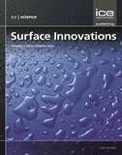
Surface Innovations
Elevating Surface Chemistry to New HeightsSurface Innovations, an esteemed journal published by Emerald Group Publishing Ltd, serves as a crucial platform for researchers and professionals working within the fields of Materials Chemistry, Process Chemistry and Technology, and Surfaces, Coatings and Films. Launched in 2013, this journal has garnered attention for its commitment to advancing knowledge and innovation, holding a distinguished Q3 ranking in multiple categories as of 2023. With a focus on the latest methodologies and applications in surface science, Surface Innovations not only facilitates the dissemination of cutting-edge research but also encourages interdisciplinary collaboration among scientists and engineers. While not an open-access journal, it offers numerous options for accessibility to engage a wide array of audiences, making it a valuable resource for those looking to expand their understanding and expertise in this rapidly evolving field. The journal's consistent inclusion in high-ranking Scopus categories further underscores its academic impact and relevance.
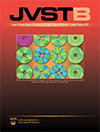
JOURNAL OF VACUUM SCIENCE & TECHNOLOGY B
Exploring Innovations in Condensed Matter and EngineeringJOURNAL OF VACUUM SCIENCE & TECHNOLOGY B, published by the AIP Publishing, serves as a vital platform for the dissemination of research in the field of vacuum science and technology. With an ISSN of 2166-2746 and E-ISSN of 2166-2754, this peer-reviewed journal covers a wide array of topics, including condensed matter physics, electrical and electronic engineering, and various materials sciences, underscored by its Q3 quartile rankings across multiple categories in 2023. Although currently operating under a subscription model, the journal is recognized for its robust editorial standards and contribution to advancements in instrumentation and process technology, making it an essential resource for researchers and professionals seeking to stay at the forefront of the field. The journal's comprehensive approach addresses both theoretical and practical aspects of vacuum technology, fostering innovation and collaboration among the academic community. Additionally, the journal spans converged years of research from 1991 to 1992 and 2009 to 2024, reflecting its dynamic evolution and relevance in addressing contemporary scientific inquiries.

China Surface Engineering
Elevating materials science through collaborative insights.China Surface Engineering is a prominent academic journal dedicated to the field of materials science, with a specific emphasis on surfaces, coatings, and films. Published by the Chinese Association of Science and Technology (CAST), this journal serves as an essential platform for researchers, professionals, and students seeking to disseminate knowledge and advancements in surface engineering technologies and innovative applications. With its ISSN 1007-9289 and E-ISSN 1007-9289, it has established a distinct presence since its convergence in 2016, and continues to evolve in the rapidly advancing materials science landscape through to 2024. Although currently categorized in the Q4 quartile of its field, with a Scopus ranking of #103 out of 132 in Surfaces, Coatings and Films, the journal plays a critical role in contributing to the discourse surrounding surface treatment and modification, fostering advancements that are pivotal for industrial applications. As an avenue not only for knowledge transfer but also for collaboration among scientists worldwide, China Surface Engineering is crucial for anyone engaged in research or practical applications in this domain.

JOURNAL OF MATERIALS SCIENCE-MATERIALS IN ELECTRONICS
Exploring Innovative Pathways in Materials ScienceJOURNAL OF MATERIALS SCIENCE-MATERIALS IN ELECTRONICS, published by Springer, is a distinguished international journal that serves as a vital platform for the dissemination of cutting-edge research in the field of materials science, with a keen focus on electronics. Since its inception in 1990, this journal has consistently contributed to the advancement of knowledge across a range of interdisciplinary categories, including Atomic and Molecular Physics, Optical and Magnetic Materials, and Biomedical Engineering, achieving notable quartile positions in various 2023 Scopus rankings. With an impact factor that signifies its scholarly influence, this journal provides a rigorous peer-reviewed environment for researchers and practitioners to share innovative ideas, experimental findings, and theoretical developments. Although it does not currently offer open access options, the depth and breadth of topics covered—including condensed matter physics and bioengineering—make it an essential resource for those at the forefront of materials research. With a commitment to bridging the gap between theory and practical application, the JOURNAL OF MATERIALS SCIENCE-MATERIALS IN ELECTRONICS continues to pave the way for future explorations in the ever-evolving landscape of materials science.
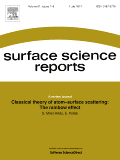
SURFACE SCIENCE REPORTS
Pioneering Research in Surfaces and InterfacesSURFACE SCIENCE REPORTS, published by Elsevier, is a premier journal dedicated to the field of surface science, exhibiting exceptional rigor and relevance in its contributions. With its ISSN 0167-5729 and E-ISSN 1879-274X, this journal has maintained an influential presence since its inception in 1981 and is set to continue its impactful trajectory through 2024. Recognized with a Q1 classification across multiple related disciplines—including Chemistry, Condensed Matter Physics, and Materials Science—it consistently ranks among the top journals, as evidenced by its impressive Scopus rankings, like #4 in Surfaces and Interfaces and #6 in Metals and Alloys. This positions the journal as a critical resource for researchers and professionals seeking cutting-edge insights into the interactions, properties, and applications of surfaces and interfaces. Although the journal follows a traditional subscription model, its comprehensive reviews and scholarly articles make it an invaluable asset for advancing knowledge in this dynamic field. By choosing to publish in SURFACE SCIENCE REPORTS, authors join a distinguished community pushing boundaries in the understanding and technological advancements related to materials and their surface characteristics, fostering collaboration and innovation worldwide.

Acta Metallurgica Sinica-English Letters
Transforming Ideas into Impactful Research in Metallurgy.Acta Metallurgica Sinica-English Letters, published by the Chinese Academy of Sciences, Institute of Metal Research, is a premier international journal that has been fostering the advancement of knowledge in the fields of Industrial and Manufacturing Engineering and Metals and Alloys since its inception in 1997. With a commendable impact factor and ranking within the top quartiles (Q1) of leading Scopus categories, this journal serves as a vital platform for researchers and professionals to disseminate innovative research findings and groundbreaking methodologies. Notably recognized with a Scopus rank of #34 out of 176 in Materials Science and rank #81 out of 384 in Engineering, it provides a robust space for high-quality, peer-reviewed articles, thus bridging the gap between theoretical advancement and practical application in metallurgy and materials science. Although currently not an open-access journal, its rigorous editorial standards and comprehensive scope ensure that only the most impactful research contributes to the scientific community and industry advancements globally. Acta Metallurgica Sinica-English Letters is an essential read for anyone eager to stay informed on cutting-edge developments within these crucial domains.